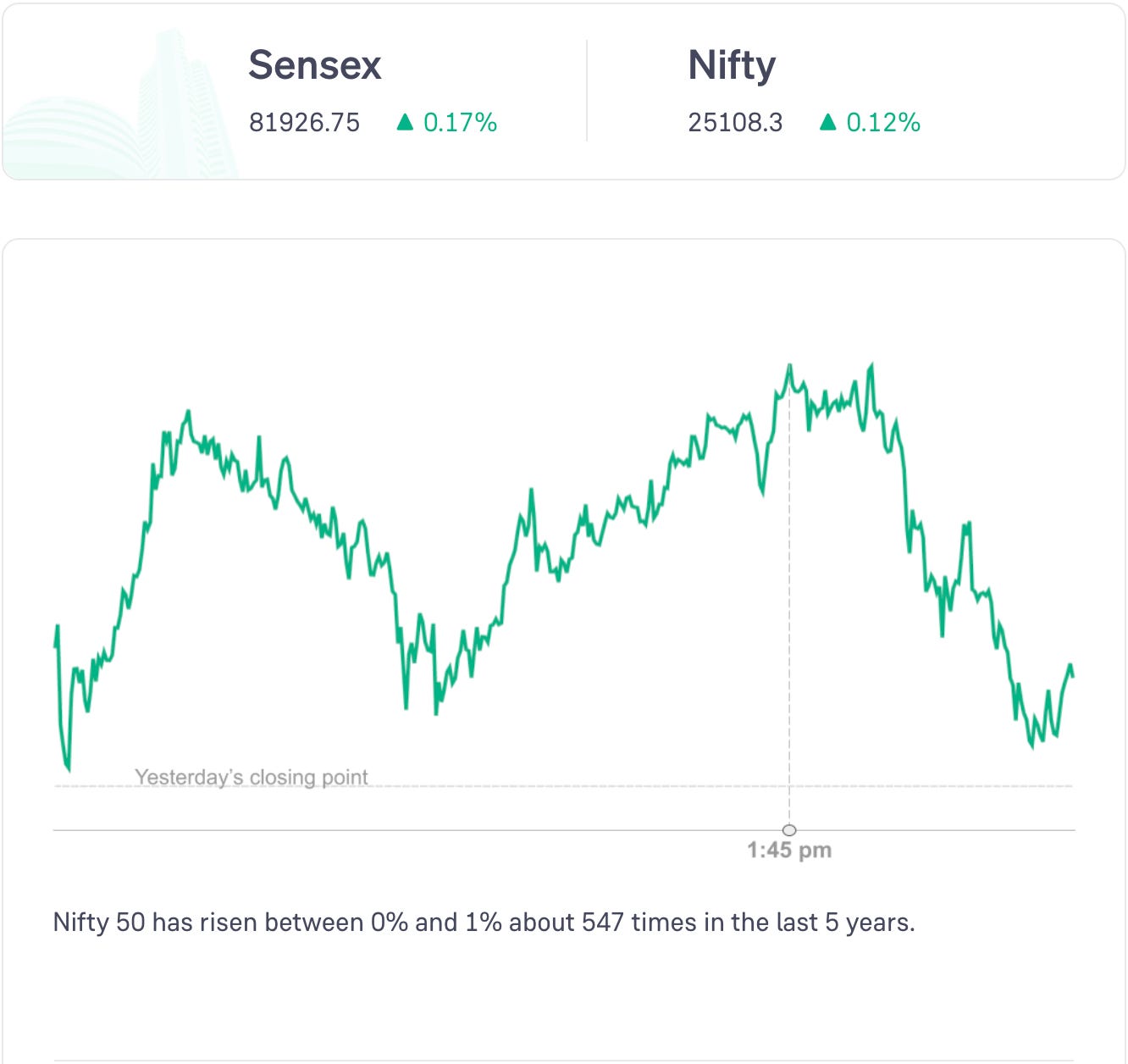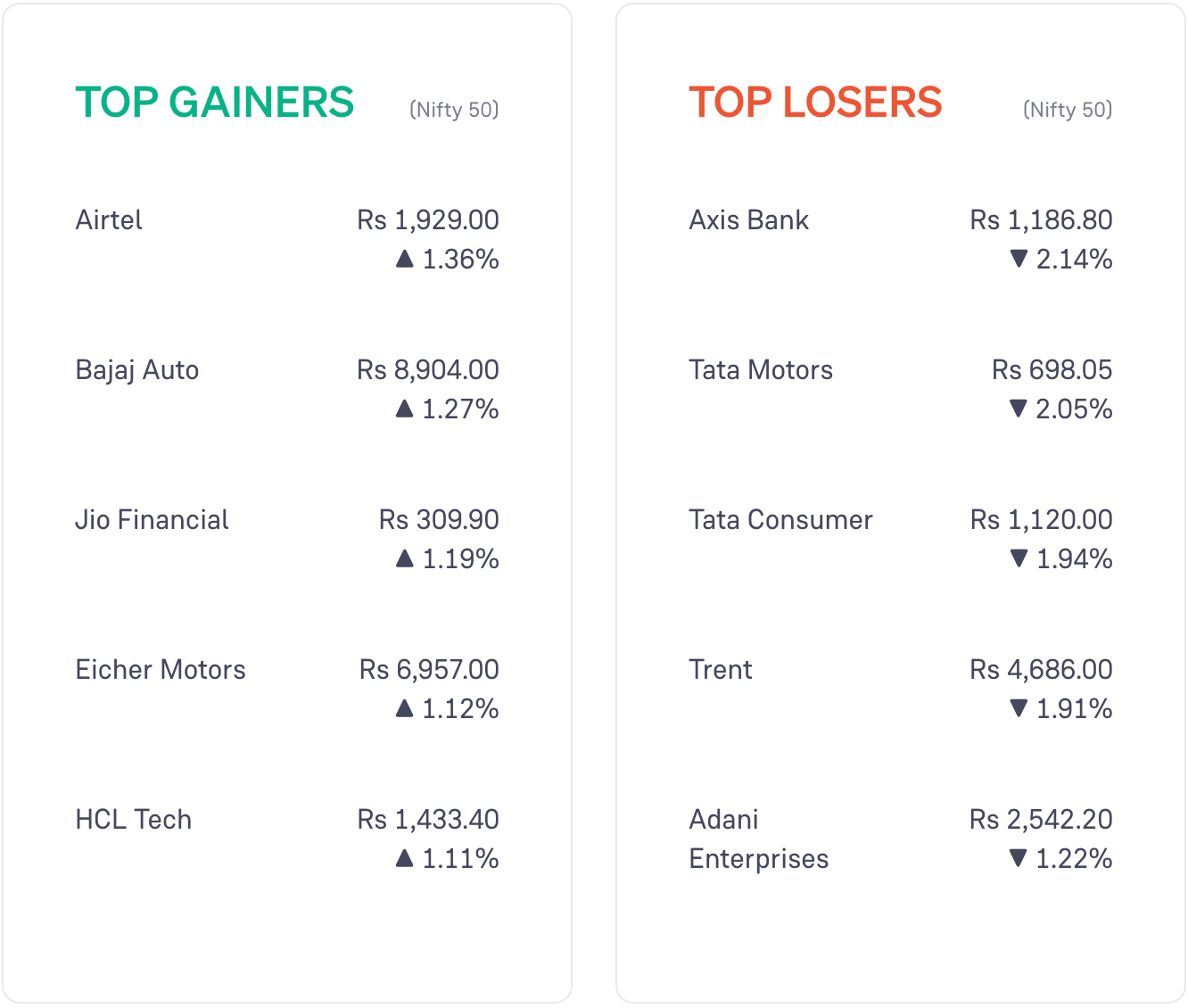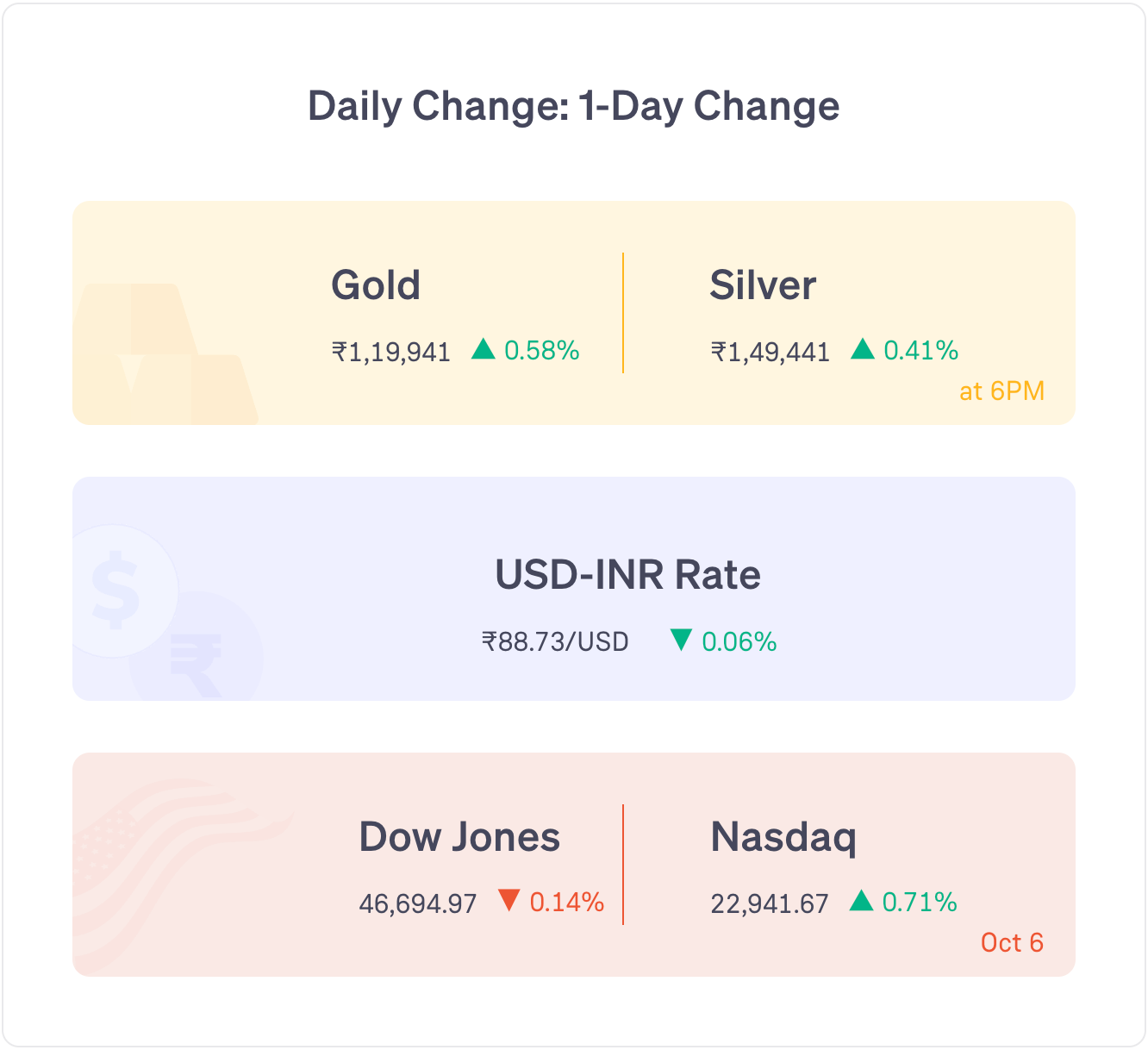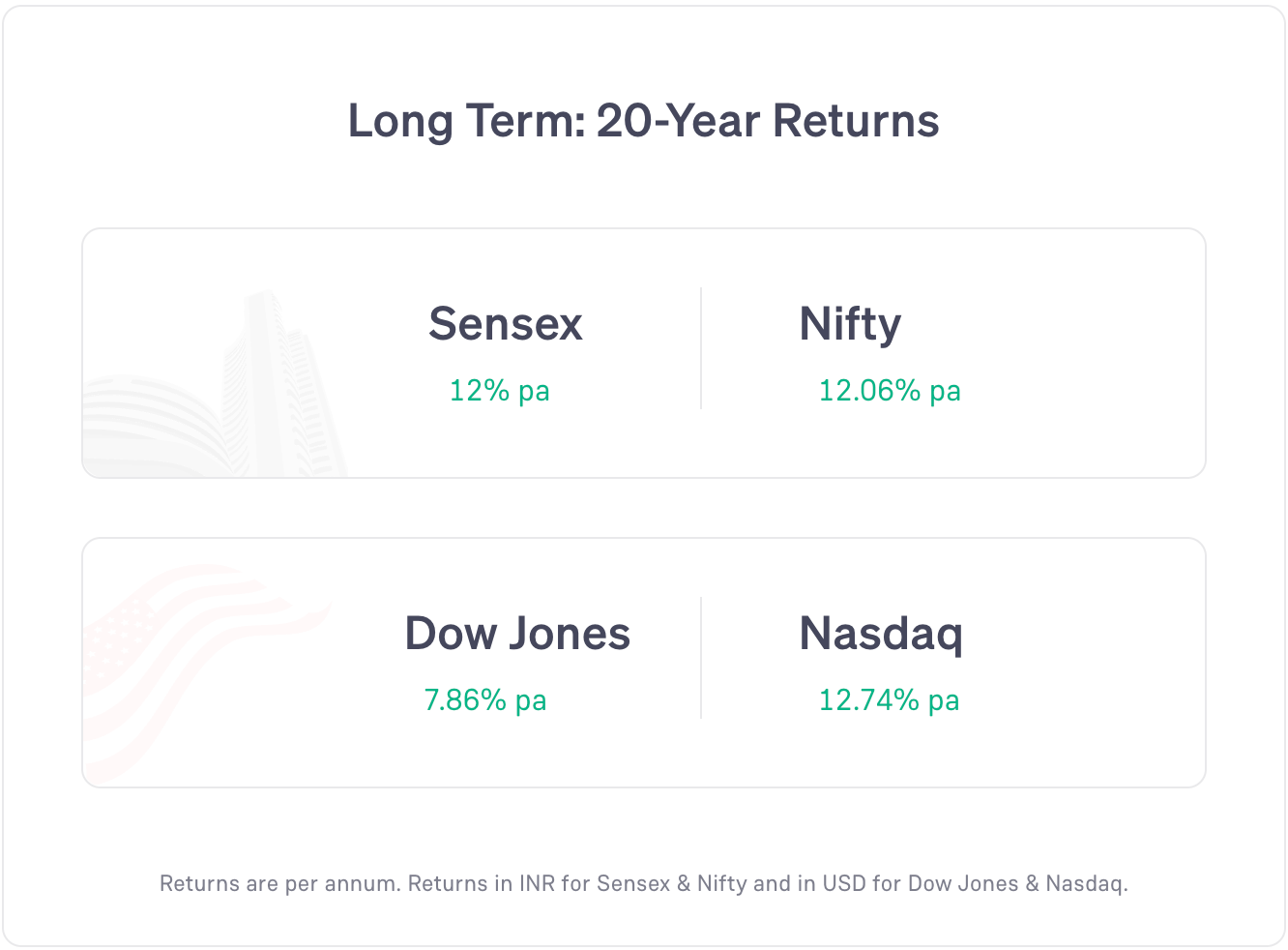Govt approves Rs 24,634 cr railway projects, exports grow 4.77% in Aug, & more - Groww Digest
Tuesday, 7 October 2025
Markets opened above Yesterday’s closing point.
Nifty 50 was volatile, fell in the last hour and closed flat.
Realty stocks and oil and gas stocks rose the most today. FMCG stocks and media stocks fell the most.
Global markets: Most US and Asian markets rose. European markets were flat (as of 6 pm IST).
News
The central government approved four railway projects covering 894 km across Maharashtra, Madhya Pradesh, Gujarat and Chhattisgarh at an estimated cost of Rs 24,634 crore. These projects will be completed by 2030-31.
India’s exports grew 4.77% year-on-year in Aug. The US was India’s top export destination, exporting merchandise goods worth $6.87 billion (vs $8.01 billion in July).
India and Qatar will start their Free Trade Agreement (FTA) negotiations soon, aiming to conclude talks by the third quarter of 2026, with a target of doubling bilateral trade by 2030: Commerce and Industry Minister Piyush Goyal.
Tata Capital IPO has been subscribed 0.75 times. Retail subscription: 0.67 times. IPO closes tomorrow (8 Oct).
LG Electronics IPO has been subscribed 1.04 times. Retail subscription: 0.81 times. IPO closes on 9 Oct.
Stocks Updates
Titan: company’s consumer businesses grew around 20% year-on-year in the July-Sept quarter, led by 19% growth in jewellery, 12% in watches, 9% in eyewear, and 86% in international sales. It also added 55 new stores.
Infosys: received a Rs 1.13 crore GST penalty notice from central authorities for FY19 to FY23.
IRFC: board fixed 24 Oct as the record date for a possible interim dividend to be decided in the board meeting on 15 Oct.
Bajaj Auto: got a Rs 3.52 crore GST demand along with a Rs 35 lakh penalty for excess input tax credit in FY22, which it plans to appeal.
Coal India: signed an MoU with Chhattisgarh Mineral Development Corp to jointly explore and mine critical minerals.
Word of the Day
Trade Deficit
It is when a country imports more than it exports
This means the country spends more buying from other countries than it earns by selling to them.
Example: if a country imports $100 billion worth of goods but exports only $70 billion, it has a trade deficit of $30 billion.
Similarly, if a country exports more than it imports, it is in a trade surplus.
Trade deficits can lead to weaker currencies, but they are not automatically bad. They can also mean the country has strong consumer demand or it is buying goods that help its economy grow.
India’s trade deficit stood at $26.49 billion in August 2025.
6 Day Course
Theme: High-risk high-reward investments
Day 2: Tuesday
Yesterday we spoke about small and mid cap mutual funds.
What’s riskier than that? But can give higher returns?
Investing in any single or small number of stocks.
Small-cap mutual funds are still made up of many companies’ shares.
Investing in one or a very small number of stocks can be riskier than that — even if the stock is that of a large-cap company.
In this case too, the downside can be very high. If things go poorly, you could end up losing a part of your original investment amount.
If things are really bad, you could end up losing a large portion or even all of your investment amount.
The upside is that if things go well, you could end up with what’s known as multi-bagger returns.
There are some stocks that have compounded at a rate in excess of 25% or even 30% per annum for many years.
Features Question
Q. “How many stocks can reshuffle in a year? in an indices.”There is no limit as such.
An index like Nifty 50 is made up of the 50 biggest companies listed on the Indian stock markets.
Companies’ size (market capitalisation) change all the time. But Nifty 50 is updated 2 times a year based on the size of the companies.
This happens at the end of March and September every year.
Usually, 2-3 companies are replaced every time they shuffle.
This means that those 2-3 companies (that were not a part of Nifty 50) have become bigger than 2-3 companies that are a part of Nifty 50.
So, they will update the Nifty 50. The smaller companies will be removed, and the new bigger companies will be added.
There’s no limit as such on the number of companies that can be shuffled in and out.
Usually, it is 2 or 3 companies. If more companies are growing faster and becoming bigger, they can replace existing companies in the Nifty 50.
Similarly, the index Sensex 30 is also updated two times a year — in June and in December.
All indices review their constituents following a different schedule.
For example: the US index S&P 500 gets reviewed and shuffled every quarter, that means 4 times a year.
Did you like this edition?
Leave a feedback here!






Excellent